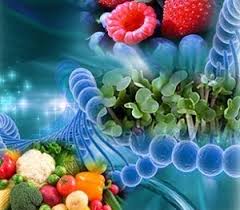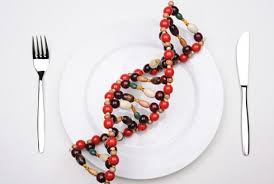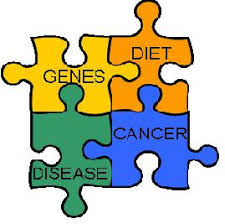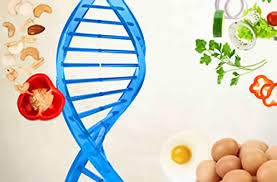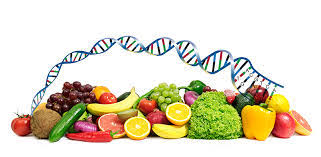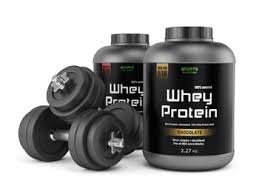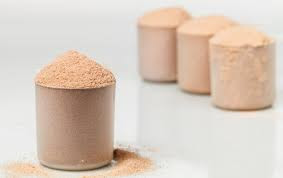Prince
Hormonal fluctuations can affect the body’s ability to maintain stable blood sugar levels, so reducing sugar intake is a major component to weight loss and maintenance. But an all-or-nothing approach is not the way to go when it comes to the sweet stuff, says Gibbs. While the women in her study who reduced their sugar intake lost the most weight, and had maintained that loss 4 years after the study began, she’s quick to say that these women reduced their sugar intake—they didn’t eliminate it altogether, which is a tough habit to keep up with (and can lead to binges). Refined sugars, like those in cookies and cakes, are the ones you should reduce. Keep the natural sugars that are found in fruit as your main source of sweetness.
I recently knew two people that suffered from kidney stones. They were in agonizing pain. So I decided to look into it a bit.
What are the functions of the kidneys? The kidneys filter the blood to remove excess mineral salts and other dissolvable wastes. The kidneys also produce the urine that dissolves these wastes and excretes them through the urinary tract. Kidney stones form when the urine becomes so saturated with certain minerals that no more of it can dissolve into the urine (like trying to dissolve too much sugar in your iced tea). The undissolved portion of the minerals form crystals that then clump together and grow into hard stones. Kidney stones usually develop in the kidneys. However they can form anywhere in the urinary tract. This condition is medically known as urolithiasis or nephrolithiasis.
When kidney stones are small, they may pass unnoticed with the urine. Sometimes, they grow too large to pass easily through the urinary tract, and some stones have rough or sharp edges. When these stones are passing through the urinary tract, it can cause pain. In some cases, kidney stones cannot pass on their own, and treatment with specialized medical equipment, dietary adjustments or surgery may be necessary.
For most people, kidney stones can recurr. Therefore, a major part of the treatment for this condition is aimed at preventing recurrences. There are various types of kidney stones. Because treatment for each differs, it is important for the professional to determine the stone’s mineral content and to identify any medical conditions that may have contributed to stone formation. Preventive treatment may be with medications and/or changes in the diet.
About 80% of all kidney stones are composed of calcium and other minerals, usually a combination of calcium and oxalate. In some cases dietary adjustments help to prevent the recurrence of these types of stones.
How does diet affect the risk of developing kidney stones?
Kidney stones can form when substances in the urine—such as calcium, oxalate, and phosphorus—become highly concentrated. The body uses food for energy and tissue repair. After the body uses what it needs, waste products in the bloodstream are carried to the kidneys and excreted as urine. Diet is one of several factors that can promote or inhibit kidney stone formation. Certain foods may promote stone formation in people who are susceptible, but scientists do not believe that eating any specific food causes stones to form in people who are not susceptible. Other factors that affect kidney stone formation include genes, environment, body weight, and fluid intake.
The best way to prevent kidney stones is to make sure you drink plenty of water each day to avoid becoming dehydrated.
Keeping your urine diluted helps to stop waste products getting too concentrated and forming stones.
One can tell how diluted their urine is by looking at its colour. The darker your urine is, the more concentrated it is.
Your urine is usually a dark yellow colour in the morning because it contains a build-up of waste products that your body has produced overnight.
Drinks such as tea, coffee and fruit juice can count towards your fluid intake, but water is the healthiest option and is best for preventing kidney stones developing.
You should also make sure you drink more when it’s hot or when you’re exercising, to replenish fluids lost through sweating.
.
Diet
If your kidney stone is caused by too much calcium crystals, you are advised to reduce the amount of oxalates in your diet.
Oxalates prevent calcium being absorbed by your body, and can accumulate in your kidney to form stones.
Foods that contain oxalates include:
*beetroot
*asparagus
Arhubarb
*chocolate
*berries
*leeks
*parsley
*celery
*almonds, peanuts and cashew nuts
*soy products
*grains, such as oatmeal, wheat germ and wholewheat
*Garden eggs (although in small amount)
Don’t reduce the amount of calcium in your diet unless your dietitian advises you to. This is because calcium is very important for maintaining healthy bones and teeth.
To avoid developing a uric acid stone, you should reduce the amount of meat, poultry and fish in your diet. You may also be prescribed medication to change the levels of acid or alkaline in your urine.
(adsbygoogle = window.adsbygoogle || []).push({});
How does animal protein in the diet affect kidney stone formation?
Meat and other animal protein—such as eggs and fish—contain purines, which break down into uric acid in the urine. Foods especially rich in purines include organ meat, such as liver. People who form uric acid stones should limit their meat consumption to 600 grams each day.
Animal protein may also raise the risk of calcium stones by increasing the excretion of calcium and reducing the excretion of citrate into the urine. Citrate prevents kidney stones, but the acid in animal protein reduces the citrate in urine.
How does calcium in the diet affect kidney stone formation?
Calcium from food does not increase the risk of calcium oxalate stones. Calcium in the digestive tract binds to oxalate from food and keeps it from entering the blood, and then the urinary tract, where it can form stones. People who form calcium oxalate stones should include 800 mg of calcium in their diet every day, not only for kidney stone prevention but also to maintain bone density. A cup of low-fat milk contains 300 mg of calcium. Other dairy products such as yogurt are also high in calcium. For people who have lactose intolerance and must avoid dairy products, products such as orange juice fortified with calcium or dairy with reduced lactose content may be alternatives. Calcium supplements may increase the risk of calcium oxalate stones if they are not taken with food.
How does oxalate in the diet affect kidney stone formation?
Some of the oxalate in urine is made by the body. However, eating certain foods with high levels of oxalate can increase the amount of oxalate in the urine thereby increasing risk of kidney stone formation, where it combines with calcium to form calcium oxalate stones.
Eat fewer oxalate-rich foods. If you tend to form calcium oxalate stones, it is recommended that you restrict foods rich in oxalates. These include rhubarb, beets, okra, garden eggs, spinach, Swiss chard, sweet potatoes, nuts, tea, chocolate and soy products.
Choose a diet low in salt and animal protein. Reduce the amount of salt you eat and choose nonanimal protein sources, such as legumes. Consider using a salt substitute.
Continue eating calcium-rich foods, but use caution with calcium supplements. Calcium in food doesn’t have an effect on your risk of kidney stones. Continue eating calcium-rich foods unless your dietitian advises otherwise. Ask your doctor before taking calcium supplements, as these have been linked to increased risk of kidney stones. You may reduce the risk by taking supplements with meals. Diets low in calcium can increase kidney stone formation in some people.
Ask a doctor to refer you to a dietitian who can help you develop an eating plan that reduces your risk of kidney stones.
Medications
Medications can control the amount of minerals and acid in your urine and may be helpful in people who form certain kinds of stones. The type of medication your doctor prescribes will depend on the kind of kidney stones you have. Here are some examples:
Calcium stones. To help prevent calcium stones from forming, your doctor may prescribe a thiazide diuretic or a phosphate-containing preparation.
Uric acid stones. Your doctor may prescribe allopurinol (Zyloprim, Aloprim) to reduce uric acid levels in your blood and urine and a medicine to keep your urine alkaline. In some cases, allopurinol and an alkalizing agent may dissolve the uric acid stones.
Struvite stones. To prevent struvite stones, your doctor may recommend strategies to keep your urine free of bacteria that cause infection. Long-term use of antibiotics in small doses may help achieve this goal. For instance, your doctor may recommend an antibiotic before and for a while after surgery to treat your kidney stones.
Cystine stones. Cystine stones can be difficult to treat. Your doctor may recommend that you drink more fluids so that you produce a lot more urine. If that alone doesn’t help, your doctor may also prescribe a medication that decreases the amount of cystine in your urine.
It is very important that a person with kidney stones to see a dietitian. Dietary adjustments go a long way to not only treat but prevent recurrences and rejuvenate the kidneys.
God bless and heal you and happy birthday to me!!
What is Casein Protein?
Derived from milk, like whey protein, casein is a naturally more abundant source of branched-chain amino acids . I guess that’s why it’s sometimes simply called “milk protein,” since around 80 percent of the protein found in cow’s milk is casein — and it also makes up 20 to 40% of human breast milk. It’s also abundant in raw sheep cheese, a pure source of casein.
Casein, like whey and other protein foods , is made up of various “building blocks” called essential and non-essential amino acids. The human body is able to make certain amino acids on its own (called non-essential) while others it cannot (called essential), making the essential kinds crucial to get through the foods you eat. Since plant foods don’t always provide the complete set of essential amino acids we need, animal foods — and sometimes convenient protein powders — are one way people make sure they cover their protein bases.
Casein protein powder is created in a lab from dehydrating parts of milk — the problem is that many forms are denatured and isolated, and may cause health issues. It is advisable to find casein protein that is from A2 beta-casein rather than A1 casein (see “Different Types of Casein Protein” below). You can usually find it in most good fitness and might come across a variety of flavors. What you’ll probably notice is that for every brand of casein protein powder available, about five different whey protein powders are also sold.
So what are the benefits of casein-protein?
LONGER LASTING:
Not all proteins are created equal. Whether it’s soy, egg, whey, animal, or casein protein, they all have their own unique advantages. Arguably, casein’s greatest strength is timing. Casein has the ability to provide your bloodstream with a slow and steady flow of amino acids that could last for hours. Muscles may not be built overnight, but drinking a glass of casein-rich milk is the ideal protein to consume right before bed, as it’ll be more helpful throughout the night than any other protein option.
GREATER GAINS
Want to build massive muscles quicker?
According to a Texas study , casein may be an important ingredient to this. Researchers took 36 males performing
heavy resistance training and found that the group consuming a whey and casein combination significantly outperformed participants who were given a combination of whey, BCAAs, and glutamine supplement. Over the course of the 10-week study, the whey and casein combination yielded the greatest increases in lean, fat-free mass. Why take only one form of protein when a combination yields much better results?
FAT LOSS:
Want to improve chances of muscle growth and fat loss? If so, you might be interested to know that a study conducted in the Netherlands found that by multiplying casein intake by two and a half times, participants were able to have a higher metabolic rate while sleeping and a better overall fat balance. Also of note is that satiety levels were 33% higher. In other words, by taking casein you’ll not only be increasing fat loss , but you’ll do so on a fuller stomach.
GREATER STRENGTH:
Ask any guy what his workout goals are and increased strength is almost always on the wish list. Often, to help get there quicker, people supplement using whey protein. In a Massachusetts study , researchers found that casein actually doubled the effect that whey protein had on legs, chest, and shoulder strength results. Researchers believe the reason for the significant difference was because of casein’s well-known anti-catabolic abilities. The next time you’re thinking of having a late-night snack, make it a casein shake.
DENTAL PROTECTION:
What makes you cringe more: The thought of the dental chair or the accompanying invoice? According to a study conducted in the United Kingdom, one way to help prevent a more expensive dental visit might be to consume casein. Their research found that casein proteins have the potential to reduce or prevent the effects of enamel erosion. So if you drink a lot of fruit juices, sweeteners or sugary substances, or just can’t kick the soft drink habit, at least consider protecting your teeth by adding some casein protein to your diet.
FOODS HIGH IN CASEIN:
While you can get casein from casein supplements you can also get a substantial amount from food sources. Casein is highest in dairy products like milk, cheese, cream, and yogurt and generally diary derivatives. Casein is also found in some fish like tuna, although in much smaller quantities than dairy products.
CASEIN CONTENT IN MILK:
Milk is one of the highest sources of casein available as roughly 80% of milk proteins are casein. So if you drink an 800mls glass of milk that has roughly 12 grams of protein, you get about 9.6 grams of casein based proteins. That is quite a lot!
WHAT ARE CASEIN HYDROLYSATE AND MICELLAR CASEIN?
MICELLAR CASEIN:
Micellar casein is the least adulterated form of supplemental casein. It is left in its “intact” molecular structure. This is important as it then is digested in a series of enzymatic and nonenzymatic processes in the body to encourage slow breakdown and absorption by the body.
HYDROLYZED CASEIN:
Hydrolyzed casein is simply micellar casein that has been broken down into smaller peptides by “hydrolyzing” the bonds. This process occurs just like it does in whey where it can be broken down using enzymes or acids. If you decide to go with hydrolyzed casein for some of the reasons we mention below, definitely go with the hydrolyzed as the acid makes it incredibly bitter.
Typically, hydrolyzed casein will be substantially more expensive than micellar casein due to the processing and extra steps in manufacturing. There doesn’t appear to be any magical properties of hydrolyzed casein over hydrolyzed whey. The magic of casein lies in the micellar form so speaking honestly, if you want something hydrolyzed go with a hydrolyzed whey.
Casein AND Whey
Although it might not fly off shelves quite as quickly as whey, casein protein is actually very similar to whey in more ways than one. Like whey, casein protein comes from dairy and is actually the primary protein found in cow’s milk. Unlike whey protein, however, it digests slower due to a complex interaction with stomach acids. This results in a slower release of essential proteins and amino acids, which makes casein the preferred supplement in situations when a slow release of nutrients is beneficial (like before bed when you’re going 7-10 hours without food).
This same benefit is also thought to make casein protein a less optimal supplement post-workout (when you want nutrients quickly). However, research indicates this might not be as big of a deal as we thought. In many cases, whey and casein can be interchangeable , St. Pierre says. “Honestly, it’s pretty much an equal substitute. The research that compares whey to caseins post-workout is equivocal,” he says. You can stock up on both. But, according to St. Pierre, “Your total protein intake far outweighs anything else.” While that total amount will vary from person to person, the experts at Precision Nutrition recommend taking in 0.6-0.9 grams per pound of bodyweight depending on activity levels (more active individuals need more protein).
Casein Protein vs. Whey Protein
For athletes, or really anyone who’s pretty active, protein is an important piece of the puzzle when it comes to muscle recovery, repairment and growth. While most people living in developed nations are far from suffering a protein deficiency, keep in mind that protein requirements increase the more active you become, and they’re especially high when you regularly lift weights or do other types of lengthy training.
While you might think that protein powders are only for serious lifters, bulky men or pro athletes, nearly everyone can benefit from supplementing workouts with the right mix of nutrients — and protein powders simply make this easier to do.
Whey protein and casein protein also differ in terms of their bioavailability and effects on muscle synthesis. Although whey protein has many of the same benefits, it’s believed to cause more of a fast “amino acid spike” compared to casein. When the body is flooded with more protein that it can use at one time, it’s possible for some to be flushed out through urine, oxidized or generally wasted.
However, this isn’t always a bad thing — different types of proteins have their upsides — so don’t go writing off whey protein just yet. There are certainly benefits to consuming both faster- and slower-releasing proteins; it really just comes down to your goals and schedule.
At the molecular level, within a protein source like casein various amino acids are branched together. Casein protein has a lower percentage of branched-chain amino acid compared to whey protein, which is one reason it’s slower to digest and also tends to work for longer. Because of its utilization and timing, casein increases protein synthesis a bit less than whey does.
On the plus side, it better stops the body from breaking down amino acids it already has available within your muscles. Whey protein also has more sulfur than casein, which can also change the way the body uses it. Compared to casein, whey is a fast protein source, which means it provides amino acids quickly after ingestion — however they also leave the body sooner than when you consume casein.
In theory, the two should work differently to affect body composition, however not every study has shown this to be true. For example, researchers from the Metabolism Unit at the University of Texas Medical Branch found that short-term ingestion of both whey and casein after exercise resulted in similar increases in muscle protein net balance. They didn’t actually result in differences in muscle protein synthesis despite different patterns of blood amino acid responses.
If all of this chemistry seems a bit confusing, here’s the bottom line on casein vs. whey. Both casein and whey protein can supplement your workouts well and include all the essential amino acids you need, but whey has more branched-chain amino acids and, therefore, might be slightly better at facilitating muscle protein synthesis.
The good news is this: After comparing the effects of both proteins on body composition and performance in female athletes, researchers from the Exercise and Performance Nutrition Laboratory at the University of South Florida found that whey and casein had similar positive effects. Females were found to experience benefits using both supplements, including an increase in performance markers from consuming protein after resistance training and a decreased body fat composition.
SOURCES:
https://www.muscleandstrength.com/expert-guides/casein-protein
http://dailyburn.com/life/health/best-protein-powder-whey-casein-vegan/
http://www.mensfitness.com/nutrition/supplements/5-benefits-of-casein-protein
While at the gym last Friday I encountered a young man who had heard plenty about the effect of whey proteins in muscle building. He asked me to affirm and I told him the much I could. It struck me then that plenty people don’t know much about whey and it’s health benefits. Where is whey contained and what does it do for you?. Milk is made of two proteins, casein and whey and right here we are going to focus on whey. Casein would come later. Whey protein can be separated from the casein in milk or formed as a by-product of cheese making.
Whey protein is considered a complete protein and contains all 9 essential amino acids and is low in lactose content. People commonly use it as a supplement, alongside resistance exercise, to help improve muscle protein synthesis and promote the growth of lean tissue mass.
Whey protein is a mixture of the following:
*Beta-lactoglobulin
*Alpha-lactalbumin
*Bovine serum albumin
*Immunoglobins.
Whey Protein Types:
There are three primary types of whey protein :
Whey protein concentrate (WPC),
Whey protein isolate (WPI), and
Whey protein hydrolysate (WPH).
Whey protein concentrate : WPC contains low levels of fat and low levels of carbohydrates (lactose). The percentage of protein in WPC depends on how concentrated it is. Lower end concentrates tend to have 30% protein and higher end up to 90%
Whey protein isolate: WPIs are further processed to remove all the fat and lactose. WPI is usually at least 90% protein
Whey protein hydrolysate: WPH is considered to be the “predigested” form of whey protein as it has already undergone partial hydrolysis – a process necessary for the body to absorb protein. WPH doesn’t require as much digestion as the other two forms of whey protein. In addition, it is commonly used in medical protein supplements and infant formulas because of it’s improved digestibility and reduced allergen potential.
How is whey protein produced?
When milk is left over and coagulates, it eventually turns into a 5% solution of lactose in water, loaded with minerals. This leftover by-product, called whey, makes up 20% of the protein in milk, the other 80% is called casein (the curds in cottage cheese). The liquid whey is separated from the casein and sent through filters to remove all non-whey ingredients. It is then purified in a process called “ion exchange”.
The final step is removing the water from the whey by turning it into a powder at a drying tower. The protein powder is then ready to be packaged and consumed.
Possible Health Benefits of Whey Protein
There are many benefits associated with the consumption of whey protein, and researchers are constantly finding new possible therapeutic properties. Please Note that many of these potential benefits are based on single studies and more evidence is required before making definitive judgement.
Whey Protein Promotes Muscle Growth
Muscle mass naturally declines with age. This usually leads to fat gain and raises the risk of many chronic diseases associated with obessity including high blood pressure and diabetes. However, this adverse change in body composition can be partly slowed, prevented, or reversed with a combination of proper exercise and adequate diet. Strength training coupled with the consumption of high-protein foods or protein supplements has been shown to be an effective preventive strategy. Particularly effective are high-quality protein sources, such as whey, which is rich in a branched-chain amino acid called leucine which is the most growth-promoting (anabolic) of the amino acids.
For this reason, whey protein is effective for the prevention of age-related muscle loss, as well as for improved strength and a better-looking body. Whey protein has been shown to be slightly better compared to other types of protein, such as casein or soy.
Lowering Cholesterol
According to a study published in The British Journal of Nutrition, “there was a significant decrease in total cholesterol and LDL cholesterol at week 12 in the whey group compared with the casein (group).”
Asthma
Whey protein could improve immune response in children with asthma. A study published in the International Journal of Food Science and Nutrition, found that children with asthma who were supplemented with whey for one month had an improved cytokine response.
Whey Protein May Lower Blood Pressure
Abnormally high blood pressure (hypertension) is one of the leading risk factors for heart disease and numerous studies have linked the consumption of dairy products with reduced blood pressure. This effect could been attributed to a family of bioactive peptides in milk, so-called “angiotensin-converting-enzyme inhibitors” (ACE-inhibitors). In whey proteins, the ACE-inhibitors are called lactokinins. Several animal studies have demonstrated their beneficial effects on blood pressure.
A limited number of human studies have investigated the effect of whey proteins on blood pressure anyway, and many experts consider the evidence to be inconclusive. One study in overweight individuals showed that whey protein supplementation, 54 g/day for 12 weeks, lowered systolic blood pressure by 4%. Casein has similar effects .
(adsbygoogle = window.adsbygoogle || []).push({});
Whey Protein May Enhance the Body’s Antioxidant Defenses
Antioxidants are substances that act against oxidation in the body, reducing oxidative stress and cutting the risk of various chronic diseases. One of the most important antioxidants in humans is glutathione.
Unlike most antioxidants we get from the diet, glutathione is produced by the body. In the body, glutathione production depends on the supply of several amino acids, such as cysteine, which is sometimes of limited supply. For this reason, high-cysteine foods, such as whey protein, may boost the body’s natural antioxidant defenses . A number of studies in both humans and rodents have discovered that whey proteins may reduce oxidative stress and increase levels of glutathione
Whey Protein is Highly Satiating (Filling), Which May Help Reduce Hunger and Aid Weight Loss.
Satiety is a term used to describe the feeling of fullness we experience after eating a meal. It is the opposite of appetite and hunger, and should suppress cravings for food and the desire to eat. Some foods are more satiating than others, an effect which is partly mediated by their macronutrient (protein, carb, fat) composition of which protein is by far the most filling of the three. However, not all proteins have the same effect on satiety. Whey protein appears to be more satiating than other types of protein, such as casein and soy.
These properties make it particularly useful for those who need to eat fewer calories and lose weight.
A study published in the journal Clinical and Investigative Medicine1 found that whey protein may help reduce weight loss among HIV-positive patients.
Recent developments on whey protein:
The beneficial effects of whey on diabetes and cardiovascular disease risk factors in obese adults
New evidence shores up findings that whey protein, which is found in milk and cheese, could have health benefits for people who are obese and do not yet have diabetes. The study, which appears in ACS’ Journal of Proteome Research, examined how different protein sources affect metabolism.
*Whey protein consumption may lead to significant decreases in body weight and body fat and significant increases in lean body mass .
*Research published in the March/April 2014 issue of the Journal of the American College of Nutrition showed that whey protein, either as a supplement combined with resistance exercise or as part of a weight-loss or weight-maintenance diet, may provide men and women benefits related to body composition.
*Researchers from Tel Aviv University have suggested that consuming whey protein before meals may reduce blood sugar spikes. Specifically, they state that a whey protein drink before breakfast can help control erratic glucose levels associated with type 2 diabetes.
Whey Protein Risks?
Generally, most of the complications associated with whey protein intake have to do with digestive issues, such as bloating, headaches, cramps and fatigue. None of these are generally considered life-threatening, more so than annoying complications. Most of the literature has shown that if you’re experiencing any of have these symptoms, they are most likely due to either the lactose (found more in Whey Protein Concentrate) or sweeteners used more so than the whey protein itself. With that said, there are different methods of whey production, such as ion-exchanged that can influence how well your body can utilize the protein, leading to improper digestion of the whey itself.
The biggest fear often expressed about whey protein intake is that too much protein is “bad for the kidneys.” Research though has shown this is not true at all in healthy individuals. For those with known kidney disease, high protein diets can exacerbate pre-existing conditions. Healthy individuals, without any underlying or unknown kidney disease have nothing to worry about with higher intakes of protein. What does occur with higher protein intakes is your body adapts to the increase in protein by increasing glomerular filtration rates (which means more fluid passes by your kidneys and there’s an increase in urine production).
Sources:
https://draxe.com/casein-protein/
https://authoritynutrition.com/10-health-benefits-of-whey-protein/
http://www.builtlean.com/2012/03/16/whey-protein/
http://www.medicalnewstoday.com/articles/263371.php?page=2
Formula Feeding Challenges
There are some challenges to consider when deciding whether to feed. Okay this is purely to inform and not to castigate or dissuade. So please do read with an open mind.
Lack of antibodies:
None of the antibodies found in breast milk are in manufactured infant formula. The abundant immunoglobulins which are essential for building baby’s immunity are absent in formula. So formula can’t provide a baby with the added protection against infection and illness that breast milk does.
Can’t match the complexity of breast milk:
Manufactured formulas have yet to replicate the complexity of breast milk, which changes as the baby’s needs change.
Planning and organization:
Unlike breast milk — which is always available, unlimited, and served at the right temperature — formula feeding baby requires planning and organization to make sure that you have what you need when you need it. Parents must buy formula and make sure it’s always on hand to avoid late-night runs to the store. Also it’s important to always have the necessary supplies (like bottles and nipples) sterile, easily accessible, and ready to go — otherwis, you will have a very hungry, very fussy baby to answer to. With 8-10 feedings in a 24-hour period, parents can quickly get overwhelmed if they’re not prepared and organized.
Expense: Formula can be costly.
Powdered formula is the least expensive, followed by concentrates, with ready-to-feed being the most expensive. And specialty formulas (such as soy and hypoallergenic) costing more — sometimes far more — than the basic formulas. During the first year of life, the cost of basic formula can run into tens of thousands of Naira.
Possibility of producing gas and constipation:
Formula-fed babies may have more gas and firmer bowel movements than breastfed babies.
How do you make up for this?
Well, if you absolutely have to formula feed, here are some guidelines to making sure your child is getting the most available. Formula feeding poses immune and neurological drawbacks but there are strategies you can take now to improve your formula-fed baby’s health. These factors can have a life-long impact on your child’s overall health.
Consider hydrolyzed milk formula:
The best choice for a first formula may be a hydrolyzed milk formula, especially if any kind of allergies exist in the family. Cow’s milk proteins are large and difficult for young babies to digest, and are highly allergenic. In hydrolyzed formulas, the proteins are broken down into smaller, more tolerable pieces (lysis).
Many of the potential problems with milk intolerance can be avoided by using one of these hypoallergenic formulas from the beginning. Often, small but regular intestinal bleeding occurs in formula-fed infants (or breastfed infants not tolerating cow’s milk proteins in mother’s diet), even when dairy intolerance is not suspected. This common occurrence is usually undetected but can lead to anemia. It may be preventable by simply beginning with hydrolyzed formula for the first months of life, when formula is necessary.
Hydrolyzed formulas do not taste as good to infants who have tasted other formulas. Therefore, it’s sometimes difficult to switch to a hydrolyzed formula once you’ve begun with regular formula.
Some babies still react to the traces of intact proteins in these. There are alternative formulas made with only amino acids (the protein building blocks), but they’re very expensive. These formulas (Neocate AA, Nutramigen AA) are even more hypoallergenic and are good choices for the very allergic, formula-fed baby (although they still contain trace corn proteins).
Some mothers are erroneously told they should feed hydrolyzed or amino acid formula to their infant who is breastfeeding and is intolerant of dietary proteins in mother’s milk. This advice is absolutely wrong. A food-intolerant baby will fare far better on mother’s milk while mother avoids dairy and any other problematic foods in her own diet.
Don’t avoid lactose:
Many are mistaken about lactose tolerance when it comes to babies. Lactose is baby sugar. It’s available only in the milks of mammals to provide for their offspring and it provides valuable immune-protective properties and more importantly energy.
A baby born with the extremely rare defect causing total inability to digest lactose quickly suffers brain damage and would not survive prior the rather recent development of lactose-free infant feeds. It is, however, common for an infant reacting to cow’s milk proteins or recovering from some other intestinal irritation to suffer a temporary reduction in lactase enzyme, needed for lactose digestion. This may cause some babies to test positively for lactose intolerance via laboratory assessments. While these babies may appear to fare slightly better with lactose-free formula, this condition will reverse as soon as a child recovers from illness or is given a feed without cow’s milk proteins or other problematic proteins in it.
Use acidophilus:
Formula-fed infants develop adult-type flora in their intestines. These flora are part of the cause of formula-fed babies’ increased incidence of intestinal illnesses. Providing a daily dose of friendly bacteria (the kind found in yogurt) may help to maintain a gentler flora for baby. Don’t give your young infant yogurt though. Instead, provide a twice-daily dose of a good quality powdered or liquid combination of Lactobacillus acidophilus, Bifidobacterium, and some other good bacteria. You can add the powder directly to the formula when preparing it (after warming), or place drops of the liquid directly in baby’s mouth. Store these friendly bacteria, known as probiotics, in the refrigerator.
Formula companies are currently studying the addition of probiotics to store formulas. They have been found to be safe for infants and to possibly reduce colic and diarrhea, although occasional constipation has been reported with probiotic-fortified formulas. Daily use of probiotics may reduce your baby’s potential for developing allergies, as formula-fed babies have a greater risk.
Consider DHA and ARA:
There has been much research lately in regards to certain fatty acids known as DHA (docosahexaenoic acid) and ARA (arachidonic acid), important nutrients for brain and vision development. These long-chain polyunsaturated fatty acids found in breast milk have traditionally been very low in infant formulas. It is known that babies are able to make their own DHA and ARA, but it has been found that they are unable to create optimal amounts. This discrepancy explains in part the slight neurological and visual deficits linked with formula feeding. Studies show some possible visual and cognitive benefits when these fatty acids are supplemented in formula-fed infants. Several recently released studies and ongoing studies are working to find the optimal levels and forms of these to add to infant formulas.
Study results so far are mixed but mostly positive. Oxidation of these fatty acids during storage may be a problem and may account for some of the mixed results. Some infants experience diarrhea from these formulas. The chemicals used in the extraction process are under scrutiny today. Fresh forms of these fatty acids might be more beneficial to infants. Some consultants are recommending adding these directly to infants’ diets. Cod liver oil is an excellent source of DHA and ARA, as well as EPA, another important fatty acid. An eighth to a quarter teaspoon per day may be appropriate for a small infant. Vegan DHA supplements are available as well.
ARA, DHA and EPA are found only in animal sources.Egg yolk is an excellent source for babies, but it’s not something to give newborns. Some nutrition consultants suggest providing one rinsed yolk plus a teaspoon of cod liver oil daily after 4 months. Since egg white is the part of eggs that can cause allergy, you should avoid using them with infants. Cod liver oil may loosen the stools.
Keep formula in the diet for 18 months :
Studies show that children fare even better when infant formula is continued in the diet for 18 months or more, rather than switching to straight cow’s or goat’s milk, or other drinks at one year. “Follow-on” formulas are just cheaper versions of infant formulas. They contain more calcium only because they have not replaced as many cow’s milk ingredients with the more-balanced nutrients put into infant formulas.
Consider avoiding the vitamin K injection:
Babies are purposely born with low levels of vitamin K, which is meant to increase gradually through feedings of breast milk, which is deliberately “low” in vitamin K. This tightly managed vitamin K level controls the rate of cellular reproduction. When infants are injected with the huge amount of vitamin K routinely given at birth, cellular reproduction may be allowed to get out of hand. Some very slight increase in leukemia cases is associated with these injections, and there are other very rare complications as well.
On the other hand, serious damage from a rare bleeding problem may be prevented by vitamin K injections at birth. A baby born with an undetected liver disorder can suffer damaging or fatal bleeding into the brain, and the clotting action of added vitamin K can reduce this bleeding.
Studies have shown that breastfed babies can be supplemented in smaller oral doses spread out over the first weeks of life and still safely avoid this rare but dangerous bleeding complication. Formulas are already supplemented with much higher levels of vitamin K than are natural or proper. Studies suggest that this gradually supplemented amount of vitamin K is adequate to prevent bleeding problems, negating the need for routine injection at birth in formula-fed babies. All babies need to be watched for signs of liver disorders, including advanced jaundice, or pale colored stools.
Take immuno-protective measures:
Because formula-fed infants miss out on the daily provisions of immunities and chemical defenses from mother’s milk, you should do all you can to assure your baby gets the best possible dose of antibodies from your body before birth. The greatest portion of these immunoglobulins are pumped into the newborn’s body during labor. A child born via scheduled cesarean section misses out on labor and its last-minute provisions unfortunately. Even when a C-section is recommended, natural labor can often be allowed to happen first, giving your baby a big, important immunity boost.
A maternal diet high in antioxidants from fruits, vegetables, and nuts, can provide baby with good stores of antioxidants before birth. These stores can help for a while with some of the oxidizing effects of infant formula. A little liquid vitamin C may be added to formula to provide some extra antioxidant protection to formula-fed babies.
Newborns are more susceptible to illness when not receiving an exclusively breastmilk diet. The first weeks of life are the most dangerous. Simply keeping your baby close to home and screening visitors for any illnesses can help a great deal. Visitors should wear a snug mask if they’ve recovered from a virus less than 3 days prior to their visit.
(adsbygoogle = window.adsbygoogle || []).push({});
Premature Milk:
Mothers of premature babies produce breast milk that is slightly different in composition, at least for the first several weeks, and this difference is designed to meet your baby’s particular needs. The premature milk is higher in protein and minerals, such as salt, and contains different types of fat that she can more easily digest and absorb. The fat in human milk helps to enhance the development of the baby’s brain and neurologic tissues, which is especially important for premature infants. Human milk is easier for her to digest than formula and avoids exposing her immature intestinal lining to the cow’s milk proteins found in premature infant formula. Premature babies who are breastfed are less likely to develop intestinal infections than are babies who are formula-fed. The milk you produce in the first few days contain high concentrations of antibodies to help your baby fight infection. Even if your baby cannot breastfeed yet, expressing breast milk from the beginning will ensure that your milk supply is maintained until your baby is able to nurse.
Where possible please stick to the natural breast milk.. Its benefits far outweigh formula.
I consider it a single ruthless insult to nature when a healthy, sane, active woman refuses to EXCLUSIVELY breastfeed her baby. It should be in MOTHERHOOD MANUAL 101! I mean, if a woman cannot provide her child with that free, immensely healthy and convenient food then what else would she? We Nutritionist/Dietitians and indeed the whole health community have laid endless emphasis on the irreplaceable qualities of breast milk especially in getting the infant ready for a superb life so it beats me when globalization, over modernization and simple outright laziness prompts a mother to decline this offer. Yes, I am taking it personal and Yes I am infuriated. It Is a spit in the face of my profession and all foods adequate! Now, for sake of emphasis let me broaden your horizon on the benefits of breastmilk.
A number of health organizatons — including the American Academy of Pediatrics (AAP), the American Medical Association (AMA), and the World Health Organization (WHO) — recommend breastfeeding as the best choice for babies and for good reason too! Breastfeeding helps defend against infections, prevent allergies, and protect against a number of chronic conditions. It also readies the babys’ brain for life with just the perfect amount of brain building nutrients.
The AAP recommends that babies be breastfed exclusively for the first 6 months. Beyond that, breastfeeding is encouraged until at least 12 months, and longer if both the mother and baby are willin. Although experts believe breast milk is the best nutritional choice for infants, breastfeeding may not be possible for all women. For many, the decision to breastfeed or formula feed is based on their comfort level, lifestyle, and specific medical situations such as cancer amd HIV.
For mothers who are unable to breastfeed or who decide not to, infant formula is a healthy alternative. Formula provides babies with the nutrients they need to grow and thrive.
Some mothers worry that if they don’t breastfeed, they won’t bond with their baby. But the truth is, loving mothers will always create a special bond with their children the situation notwithstanding. And feeding — no matter how — is a great time to strengthen that bond.
The decision to breastfeed or formula feed the baby is a personal one. Weighing the pros and cons of each method can help you decide what is best for mother and baby.
We Dietitians always preach formula feeding as a fall back option where breastfeeding is impossible. First let me tell you why this nectar from God is factory fitted and perfect for you and baby.
About Breast feeding:
Nursing can be a wonderful experience for both mother and baby. It provides ideal nourishment and a special bonding experience that many mothers cherish.
Here are some of the many benefits of breastfeeding:
Fighting infections and other conditions:
Breastfed babies have fewer infections and hospitalizations than formula-fed infants. During breastfeeding, antibodies and other germ-fighting factors pass from a mother to her baby and strengthen the immune system. This helps lower a baby’s chances of getting many infections, including:
*Ear infections
*Diarrhea
*Respiratory infections
*Meningitis
Breastfeeding also may protect babies against:
*Allergies
*Asthma
*Diabetes
*Obesity
*Sudden infant death syndrome (SIDS)
Breastfeeding is particularly beneficial for premature babies.
Nutrition and Ease of Digestion:
Often called the “perfect food” for a human baby’s digestive system, breast milk’s components — lactose, protein (whey and casein), and fat — are easily digested by a newborn. As a group, breastfed infants have less difficlty with digestion than do formula-fed infants. Breast milk tends to be more easily digested so that breastfed babies have fewer bouts of diarrhea or constipation.
Breast milk also naturally contains many of the vitamins and minerals that a newborns require. One exception is vitamin D — the AAP recommends that all breastfed babies begin receiving vitamin D supplements during the first 2 months and continuing until a baby consumes enough vitamin D-fortified formula or milk (after 1 year of age).
Convenience:
With no last-minute runs to the store for more formula, breast milk is always fresh and available . As an added advantage when women breastfeed, there’s no need to wash bottles and nipples or warm up bottles in the middle of the night.
Smarter babies:
Smarter Fats:
One key ingredient in breastmilk is a brain-boosting fat called DHA (docasahexaenoic acid), an omega-3 fatty acid. DHA is a vital nutrient for growth, development and maintenance of brain tissue. Autopsy analysis of brain tissue frm breastfed and formula-fed infants show that the brains of breastfed babies have a higher concentration of DHA, and DHA levels are highest in babies who are breastfed the longest. Most Infant formulas do not contain DHA except a few fortified only recently.
(adsbygoogle = window.adsbygoogle || []).push({});
Add More DHA to your Diet
To insure that babies get enough nutrients for their growing brains, it’s important that breastfeeding mothers get enough DHA in their diets. Rich sources of DHA are fish (particularly salmon and tuna). Increasing DHA consumption will benefit the mothers health too. Remember the nutritional rule of F’s: four ounces of fish a day keeps central nervous system degeneration at bay.
Cholesterol
Cholesterol is another fat needed for optimal brain development. Breastmilk contains a lot of cholesterol, while infant formulas currently contain none. “Low in cholesterol” may be good news for adult diets, but not for babies–cholesterol provides basic components for manufacturing nerve tissue in the growing brain.
DHA, cholesterol and other breastmilk fats provide the perfect substances for manufacturing myelin, the fatty sheath that surrounds nerve fibers. Myelin acts as insulation, making it possible for nerves to carry information from one part of the brain or body to another. So important are these brain-building fats, that if mother’s diet doesn’t provide enough of them for her milk, the breasts can make them on the spot!!
Smarter Sugars
Lactose is the main sugar in breastmilk. The body breaks it down into two simpler sugars – glucose and galactose. Galactose is a valuable nutrient for brain tissue development and matrurition. Anthropologists have demonstrated that the more intelligent species of mammals have greater amounts of lactose in their milk, and human milk contains one of the highest concentrations of lactose of any mammal milk. Cow milk and some cow milk formulas contain lactose, but not as much as human milk. Soy-based and other lactose-free formulas contain no lactose at all, only table sugar and corn syrup.
Smarter Connections
During the first two years of your baby’s life, the brain grows rapidly, and baby’s everyday experiences shapes brain growth. Brains cells, called neurons, multiply and connect with each other until the brain circuitry resembles miles of tangled electrical wires. Every time a baby interacts with her environment, the brain makes a new connection. Because breastmilk is digested faster, breastfed babies feed more often and therefore probably interact with their caregivers more often. Breastfeeding itself, with its skin-to-skin contact, the variations in milk flow, and the closeness between mother and baby, is usually a more interesting, more interactive experience than bottle-feeding. This is nature’s way of insuring that babies get the stimulation they need for optimal benefits from breastfeeding and brain development.
Some studies suggest that children who were exclusively breastfed have slightly higher IQs than children who were formula fed. I actually NEED this to sink into my reader.
“Skin-to-skin” Contact:
Many nursing mothers really enjoy the experience of bonding so closely with their babies. And the skin-to-skin contact can enhance the emotional connection between mother and infant.
Benefits for Mummy:
The ability to totally nourish a baby can help a new mother feel confident in her ability to care for her baby. Breastfeeding also burns calories and helps shrink the uterus, so nursing mothers may be able to return to their pre-pregnancy shape and weight quicker. Also, studies show that breastfeeding helps lower the risk of breast cancer, high blood pressure, diabetes, and cardiovascular disease, and also may help decrease the risk of uterine and ovarian cancer.
Premature Milk:
Mothers of premature babies produce breast milk that is slightly different in composition, at least for the first several weeks, and this difference is designed by nature to meet the baby’s particular needs. The premature milk is higher in protein and minerals, such as salt, and contains different types of fat that she can more easily digest and absorb. The fat in human milk helps to enhance the development of the baby’s brain and neurologic tissues, which is especially important for premature infants. Human milk is easier for her to digest than formula and avoids exposing her immature intestinal lining to the cow’s milk proteins found in premature infant formula. Premature babies who are breastfed are less likely to develop intestinal infections than are babies who are formula-fed. The milk you produce in the first few days contains high concentrations of antibodies to help your baby fight infection. Even if your baby can’t breastfeed yet, expressing breast milk from the beginning will ensure that your milk supply is maintained until your baby is able to nurse.
Easy Acceptance for Local Foods:
Nursing mothers usually need 500 extra calories per day, which means they should eat a wide variety of well-balanced foods. This introduces breastfed babies to different tastes through their mothers’ breast milk, which has different flavors depending on what their mothers have eaten. By tasting the foods of their “culture,” breastfed infants more easily accept solid foods.
Food and Drug Administrations usually regulate formula companies to ensure they provide all the necessary nutrients (including vitamin D) in their formulas. Still, commercial formulas can’t completely match breast milk’s exact composition. Why? Because milk is a living substance made by each mother for her individual infant, a process that can’t be duplicated in a factory.
Free breast milk doesn’t cost a cent, while the cost of formula quickly adds up. And unless you’re pumping breast milk and giving it to your baby, there’s no need for bottles, nipples, and other supplies that can be costly. Since breastfed babies are less likely to be sick, that may mean they make fewer trips to the doctor’s office, so fewer co-pays and less money are paid for prescriptions and over-the-counter medicines.
Lawrence RM, Lawrence RA (2009). The breast and physiology of lactation. In RK Creasy et al., eds., Creasy and Resnik’s Maternal-Fetal Medicine, 6th ed., pp. 125-142. Philadelphia: Saunders Elsevier.
American Academy of Pediatrics (2011). SIDS and other sleep-related infant deaths: Expansion of recommendations for a safe infant sleeping environment. Pediatrics, 128(5): 1030-1039.
American Academy of Pediatrics (2009). Breastfeeding. In RE Kleinman, ed., Pediatric Nutrition Handbook, 6th ed., pp. 29-59. Elk Grove Village, IL: American Academy of Pediatrics.
http://kidshealth.org/en/parents/breast-bottle-feeding.html
http://www.unicef.org.uk/BabyFriendly/What-is-Baby-Friendly/benefits-of-breastfeeding/
Even More Tips for Better Sex
If pushups, crunches, and deadlifts aren’t your idea of a sweaty good time, you’ve still got plenty of exercise options to help keep things steamy.
Pick your pleasure: 
Rather walk, swim, or jog? How about Pilates or yoga? Maybe you prefer biking or skiing? Great, because Paul Frediani, fitness coach and co-author of Sex Flex: The Way to Enhanced Intimacy and Pleasure , says “barring any health problems, cardiovascular exercise of any kind is a great way to stimulate your sex life”. Now trust me, enjoying the stuff you do helps relieves you of the stress of the activity, makes you look forward to it and enhances it’s benefits.
But you’ll want to avoid the weekend warrior syndrome to get the most out of exercising. Th.s means you have to exercise more than just on weekends to reap full benefits. Aim for a 30-minute workout five times a week. Get your blood pumping regularly and the payoff is simple: endurance, more strength to hold positions, and the flexibility to hold them comfortably. Now that’s sexy. *wink*
Bonus: Better Erections!
Wowza!
You may already be sold on the benefits of exercise, but here’s a bonus free of charge. Exercise may also help beat erectile dysfunction. One study showed that, for men over 50, being physically active means a 30% lower risk of erectile dysfunction as compared to men who are sedentary. Studies also show a strong link between obesity and erectile dysfuncton.
In addition, people who exercise often have a better body image than people who don’t. This can help them feel more sexually appealingnt and confide. One study found that “80% of men and 60% of females who exercised two to three times a week felt their sexual desirability was above average,” Weil says. Exercise could also help produce more muscles, which in turn increases testosterone production and sex drive.
Practice! Practice!! Practice!!!
If you’re not lasting as long as you’d like in bed, you might need some practice. While sex is the best way to practice for sex, masturbation can also help you improve your longevity.
However, how you masturbate could have detrimental effects. If you rush through it, you could inadvertently decrease the time you last with your partner. The secret is making it last, just like you want to when you’re not alone.
Dietary Management of Sexual Dysfunction

Certain foods can also help increase blood flow towards those parts you want them most. They include:
Onions and garlic: These foods may not be great for your breath, but they can help your blood circulation.
Bananas: This potassium-rich fruit can help lower your blood pressure, which can benefit your important sexual parts and boost sexual performance.
Chilies and peppers: All-natural spicy foods help your blood flow by reducing hypertension and inflammation.
Nutrients that can help you achieve better blood flow:
Omega-3 acids: This type of fat increases blood flow. You can find it in salmon, tuna, avocados, and olive oil.
Vitamin B-1: This vitamin helps signals in your nervous system move quicker, including signals from your brain to your penis. It’s found in pork, peanuts, and kidney beans.
Eggs:
High in other B vitamins, eggs help balance hormone levels. This can decrease stress that often inhibits an erection.
Sources:
http://www.healthline.com/health-slideshow/male-sexual-performance.Accessed 27th July, 2016.
http://www.askmen.com/dating/love_tip_250/287b_love_tip.html
http://www.webmd.com/men/features/exercises-better-sex. Accessed 27th July, 2016.
Hamilton, L.D., Rellini, A.H., & Meston, C.M. “Cortisol, sexual arousal, and affect in response to sexual stimuli” Journal of Sexual Medicine 5 (2008): 2111-18.Accessed 27th July, 2016.
Ojanlatva, A., et al. “Sexual activity and perceived health among FinnisAccessed 27th July, 2016.h middle-aged women.” Health and Quality of Life Outcomes 4 (2006).Accessed 27th July, 2016.
McNamara, E., Alfred-Thomas, J., & Freedland, S.J., “Exercise Correlates to Higher Sexual Function Scores in a Cohort of Healthy Men” (paper presented at the 105 Annual Meeting of the American Urological Association, 31 May 2010).Accessed 27th July, 2016.
His and Her Heath. ” Smoking, Lack of Exercise Impacts Sexual and Urinary Function .” Accessed 27th July, 2016.
Regular Physical Activity Can Lead to Enhanced Arousal!
During exercise feel good chemicals called endorphins are released, and this same release happens during sex. The more frequently one can trigger these endorphins release via sex or exercise, the easier it is to become sexually aroused. The sex organs depend a lot on blood pressure. The brain sends signals to them that causes vessels to swell with blood. Your heart is responsible for pumping the blood. If your heart isn’t at its healthiest, it can cause problems with blood flow from the heart to the vessels in the vagina and penis. This can make it difficult to achieve a full arousal and affect overall sexual satisfaction. Make sure your circulatory system is working at top shape, because basically, what’s good for your heart is good for your sexual health!
Sex and Exercise
Strength training could be just what the doctor ordered for your sex life. The reason being that “weight lifting causes the body to produce testosterone , which is the primary precursor for the male sex drive,” says McCall, who recommends lifting enough to feel fatigue by the 10th repetition. In fact, some studies have linked short intense exercise, such as weight lifting, with increased testosterone levels. To improve your sex life, do some push-ups, sit-ups, and crunches. These muscle-building exercises can help lead to better sex by strengthening the shoulders, chest, and abs. Strong upper body strength can increase stamina since these muscles are most used during intercourse.
Kegels:
Kegels is a wonderful exercise for both the male and female sexual health because these exercises can help endurance and control by toning the pubococcygeus (PC) muscles — the ones that let you stop the flow of urine mid-stream. They help the men stay harder longer and prevent premature ejaculation. For the women, it’s keeps yuuou tight and firm down there and helps you achieve orgasm faster! (tip: try doing this exercise while he’s inside you and watch the both of you explode together). Named after Los Angeles physician Arnold Kegel, they strengthen the muscles in your body’s pelvic floor, which can lead to better sex. “Men can use Kegels to delay ejaculation by contracting these muscles just before orgasm,” says McCall. To do Kegels, start by interrupting the flow of urine when going to the bathroom to get familiar with your PC muscles. After that, you can do Kegels anytime and any place by squeezing the PC muscles. Hold for 10 seconds, relax, and do as many reps as you can before tiring.
Fast Walking:
In a study of 31,000 men over age 50, Harvard researchers found that aerobic exercise resulted in a 30-percent lower risk of erectile dysfunction (ED) . More specifically, according to another study, aerobic activity that burns at least 200 calories per day (equal to fast walking for two miles) can significantly lower the risk of ED. Brisk walking is thought to help ED by improving circulation and blood flow. “Fast walking, running, and other aerobic activities help your sex life for the same reason that they prevent heart attacks,” says McCall. “They keep your blood vessels clear.” The result can be stronger and longer erections. Vigorous activities, such as running and brisk walking, also release endorphins and relax you, which can boost sexual performance.
Swimming:
In another Harvard study of 160 male and female swimmers, swimmers in their 60’s reported sex lives comparable to those in their 40s. Since sexual activity can be an act of endurance, long-distance swimming can keep you going and going like the Energizer bunny. “Swimming for at least 30 minutes three times a week will increase sexual endurance,” says McCall. Swimming is also a great activity for weight loss, which can also lead to better sex. A randomized, single-blind study of 110 obese men with ED found that losing just 10 percent of their body weight improved sexual function in one third of the men. And it’s no secret that losing excess body fat will help attain those six-pack abs and make you more attractive to potential partners. The result: better sex!
Core Strengthening:
Strength in the abdomen, pelvis, middle and lower back is what “core strength” refers to. A couple of good exercises to improve core strength are abdominal crunches and alternate arm leg raises. Alternate arm leg raise is where you begin on all fours facing down with knees bent, and then lift the opposite arm and leg at the same time. Hold this for a few seconds and then swap sides. Not only will this be good for your core, it will also work your shoulders and glutes, plus help with balance .
Upper Body Work:
Any sexual position where you have to support yourself using the arms (such as missionary for the man) requires strength in your upper body. Key exercises to help strengthen are push ups, which work the chest and triceps, the rowing machine in the gym, or using free weights to do various upper body sets, such as bicep curls, tricep push backs, and shoulder press.
Try This:
Lie on your back, hands supporting your neck, knees bent, and your feet on the floor. Then bring your body up just enough to get your shoulders off the ground. Do 3 to 5 sets of 15 to 20 repetitions.
For additional ab strength, Weil suggests men and women also do bridges. Lying on your back, knees bent, feet on the floor, lift your hips up and down for 3 sets of 15 reps. Men can also try pelvic tilts. Standing up or lying down, straighten your lower back and pull your belly button in until your lower back touches the wall or floor. Women can try Kegels.
Deadlifts:
“This exercise will keep your back as strong as it can be”, Weil says, and give your legs and torso a workout too. You start in a neutral bent-over position and raise a weighted barbell or dumbbells from the ground.
Squats:
Just like the previous exercise, everyone has heard of these.
Squats will help you in a very similar way to how deadlifts help you: through hip extension. These can be very tiring as well, so if you’re performing high reps, you’ll definitely be getting some cardio in as well. And we all know how much that can help in the bedroom.

But another, and often overlooked way, that squats can help your sex life is by getting you used to standing while carrying weight. Many people have the fantasy of having sex against the wall while holding their partner. This is something that requires a great amount of strength and not a lot of people can do this. Squats will develop your leg and back strength to such an extent that you’ll quickly see that holding your partner against the wall isn’t as hard as it seems to be. Many people are scared to perform these as well, out of fear of injuring their knees. As mentioned before, if performed correctly, squats are 100% safe. Take your time to learn the form, and do not feel obliged to lift heavy weights!
Planks:
These are a great exercise that will really come in handy while you’re in missionary position. This position can be very exhausting for your arms and abs. What better way to get better at missionary than basically mimicking the movement?
There are many ways that you can perform planks . The first and most simple way is to do a plank on your elbows. The next step up would be to hold it in a push up position. If that get’s too easy for you, then you can hold it while having your hands on an exercise ball instead of the ground. The last variation is the hardest, but also the most effective, and the one that will benefit you the most in bed. Keeping a tight core while your body wants to move around is directly going to benefit you while you’re
Interval Training (HIIT):
Sex isn’t a sprint…well, not always. It has a cardio component to it. But something that a lot of people forget is that sex isn’t something that you do at a constant rate. You go fast. Then slow. Then fast. Then slow. You’re always changing it up. And your training should reflect this.
This is where interval training comes into play (also known as HIIT , high intensity interval training). HIIT can be done with your preference of cardio. I like to do it on the bike.

The way it works is you split your workout into intervals. You sprint all out for 15 seconds, and then go at a steady state for 90 seconds. You keep switching between the two for a total of 10-15 min.
Incorporating HIIT into your workouts will have you ready for exactly what’s to come later that night in the bedroom.
Leg Raises:
This is an ab exercise that your girl will thank you for doing.
We all know that the g-spot is located at the top of the vagina. To hit the spot during sex, we have to tilt our pelvis upwards as we thrust. This is exactly what leg raises achieve. You are raising your legs to your chest, effectively training your ability to tilt your pelvis upwards.
Leg raises can be done either with a back support, or by hanging off of a pull up bar, or with bent legs, or with straight legs. The latter is more difficult in both cases, but if you can work your way to being able to doing those, you’ll definitely see the benefits.
Groin Stretches:

Flexibility is an often overlooked aspect of sex for men. Most people believe that the woman is the only one that needs to be flexible.
What happens when you have been having sex with the same person for years on end? Things start to become stale. You’re going to start wanting to try different things in the bedroom. And these things may require a degree of flexibility from you. Flexibility isn’t only going to help you in the future. It’s going to help you today. As I mentioned earlier, there are many different ways to have missionary sex. Many women like having their legs spread far out as they’re in that position, but not all can maintain that position without help. How do you help her do this? By spreading your legs as well, similar to a frog, which will give her leverage to spread hers.
This is something that is possible by having a flexible groin. A great stretch for your groin is the bottom of the squat. Sit at the bottom of the squat position and use your elbows to push your knees outwards. Hold this stretch for approximately 30 seconds.
Try doing some (or all) of the above workouts to improve your sexual technique, endurance, and flexibility. Your mate will be impressed with your sexual powers and, as a side benefit, you’ll get healthier and fitter along the way.
More Tips and Sources Tomorrow, don’t be too greedy lol!
The findings of a new review suggest that dietary omega-3 fatty acids from fish oil fight prostate cancer on several levels. Although this is not the first study to show a positive relationship between fish oil and the growth and progression of prostate cancer, it does, according to the authors, “underscore the potential of fish oil in modulating the clinical course of human prostate cancer through the immune system.”
Immunotherapy, or utilization of the immune system to repair, enhance, or stimulate the body’s natural immune responses to fight cancer, is a rapidly growing field of research. In addressing the challenge of prostate cancer, scientists have developed or are developingvarious immunotherapeutic approaches(e.g., Provenge, checkpoint therapies). However, natural substances also may have potential, includingomega-3 fatty acids.
(adsbygoogle = window.adsbygoogle || []).push({});
How can omega-3 fatty acids fight prostate cancer?
In a recentUniversity of California study, a research team explored the idea that a fish oil-based diet would inhibit infiltration of immune system cells called tumor-associated macrophages, which play a significant role in the development of prostate cancer. They tested their hypothesis using mice in whom prostate cancer tumors were grown. Half the mice were fed a diet high in omega-3 fatty acids (fish oil) and the other half were given omega-6 fatty acids (corn oil).
Tumor volumes were significant smaller in the mice fed the fish oil diet. The animals fed fish oil had lower levels of factors associated with cancer growth and progression, including markers for M1 and M2 macrophages, tumor necrosis factor alpha, interleukin-6, interleukin-10, and the chemokine CCL-2. When the team conducted in vitro experiments, the findings were similar.
The authors concluded that their findings highlight the “potential of fish oil in modulating the clinical course of human prostate cancer through the immune system.” Although further studies are needed to better identify the role of fish oil in inhibiting factors involved in prostate cancer, now is the time to include more omega-3 fatty acids in your diet, given the findings of this study andprevious researchshowing a lower risk of prostate cancer associated with greater intake of omega-3 fatty acids from fish oil.
(adsbygoogle = window.adsbygoogle || []).push({});
Good sources of dietary omega-3 fatty acids include wild salmon, tuna, herring, sardines, and mackerel as well ashigh quality fish oil supplements. It’s important to choose fish and supplements from unpolluted sources. If you don’t regularly eat fish two to three times a week, you should consider an omega-3 supplement, which also should be made from unpolluted sources and be free of unnecessary additives.
Omega 3 rich foods and Supplements; The difference:
The omega-3 fats in fish have been linked to all sorts of health benefits, including protection against prostate cancer. Recently though researchers have found a link between high levels of omega-3 fats in the blood and prostate cancer.
The latest report comes from researchers at the Fred Hutchinson Cancer Center in Seattle. Their case-control study compared blood samples from 834 men diagnosed with prostate cancer with samples from 1,393 men who didn’t have the disease. The blood samples had been collected as part of the SELECT trial designed to find out if taking selenium or vitamin E could prevent men from developing prostate cancer. (Selenium had no effect and vitamin E was associated with an increase in risk.)
The researchers tested the samples for their omega-3 content. Men whose blood samples were in the top 25% of omega-3 fat content were 43% more likely to have been diagnosed with prostate cancer than men whose blood samples were in the lowest 25% of omega-3 content. The finding were published online in the Journal of the National Cancer Institute .
The results didn’t differ much when the three different types of omega-3 fats found in fish and fish oil—eicosapentaenoic acid (EPA), docosahexaenoic acid (DHA) and docosapentaenoic acid (DPA)—were analyzed separately.
In May of this year, Italian researchers reported in the New England Journal of Medicine that omega-3 fatty acid supplements did nothing to reduce heart attacks, strokes, or deaths from heart disease in people with risk factors for heart disease.
(adsbygoogle = window.adsbygoogle || []).push({});
Could it be fish oil and not fish that’s to blame?
Omega-3s have anti-inflammatory effects, and that’s part of the reason they have been seen as dietary good guys and possibly having an anticancer effect. Why they might have a dark side that increases prostate cancer risk is simple enough
One important point to keep in mind, though, is that there may be a difference between eating the main thing and taking fish-oil supplements. Over and over again, nutrition research has shown that diets full of food and drink that supply vitamins, minerals, and healthful fats are correlated with good health, whereas studies of supplements that try to isolate what are believed to be the healthful constituents of the food have consistently been disappointing.
Just to be clear: this latest study correlated blood levels of omega-3 fats to prostate cancer. It wasn’t able to prove that omega-3 fats cause prostate cancer, nor did it go into how those blood levels came about and whether men with high blood levels were big fish eaters, took fish-oil supplements, or both.
One should consider eating fish and other seafood as a healthier strategy as opposed to supplements and isolates. If we could absolutely, positively say that the benefits of eating seafood comes entirely from omega-3 fats, then taking fish oil pills would be an alternative to eating fish. But it’s more than likely that you need the entire orchestra of fish fats, vitamins, minerals, and supporting molecules, rather than the lone notes of EPA and DHA.
Long-chain omega-3 fatty acids may be good for the heart, but you can obtain enough from your diet. Supplements are never better options than a whole meal.
A healthy diet should include at least two portions of fish a week, including one of oily fish (such as mackerel). Babies, children and women who are pregnant, breastfeeding or planning to have children should have no more than two portions of oily fish a week. Those not in these groups can eat up to four portions a week. This maximum level is recommended to avoid overexposure to marine pollutants.
Sources:
http://m.cancer.org/cancer/news/omega-3-fatty-acids-linked-to-increase-in-prostate-cancer-risk
http://www.harvardprostateknowledge.org/high-intake-of-omega-3-fats-linked-to-increased-prostate-cancer-risk
http://www.ncbi.nlm.nih.gov/pubmed/25787237
http://www.prostate.net/2016/latest-news-articles/omega-3-fish-oil-helps-fight-prostate-cancer/

